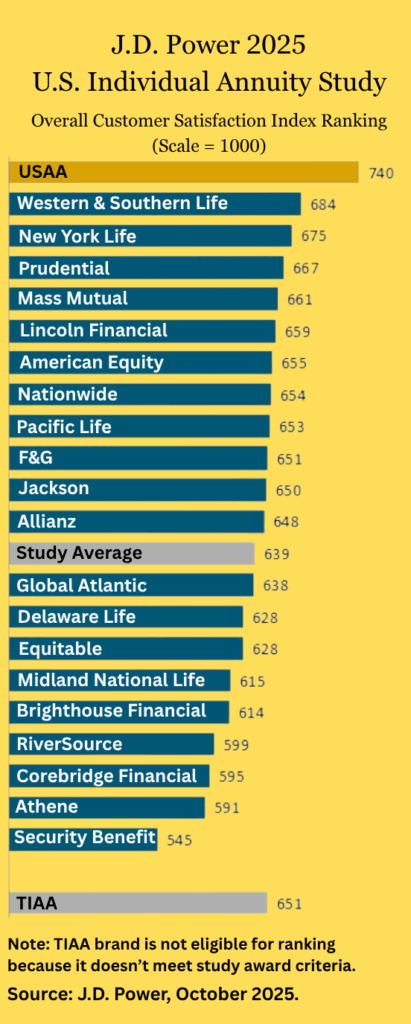A Putnam Investments road show, led by CEO Bob Reynolds (left), rolled into the gilt-and-rococo splendor of Manhattan’s St. Regis Hotel yesterday morning to showcase the initial fruits of the company’s new retirement research unit, the Putnam Institute.
The Institute—the latest of many such research units sponsored by a variety financial services firms to claim “thought-leadership” in the retirement space—released two findings that it considered counter-intuitive and newsworthy:
First—and this bucks conventional wisdom—Putnam found that a retiree’s equity allocation in retirement should be “in the 5% to 10% range.” Second, a recent Putnam survey showed that Americans who are least prepared for retirement earn, about the same as those most prepared for retirement, on average. Conclusion: they just don’t have the tools or discipline to save.
The 5% to 10% equity allocation finding was based on a new Putnam Institute research paper, “Optimal Asset Allocation in Retirement: A Downside Risk Perspective,” by Institute research director W. Van Harlow, Ph.D.
For retirees whose money is all at risk in investment products, most recommended equity allocations are too high, Harlow said. Rather than provide inflation protection—the usual justification for holding equities in retirement—that strategy exposes retirees who are reverse-dollar-cost-averaging to volatility and sequence-of-return risk.
“I didn’t really appreciate the impact of sequence-of-returns risk until about three years ago, when Moshe Milevsky [of Canada’s York University] explained it to me,” confessed Van Harlow, a former professor at the University of Texas and University of Arizona.
The second part of Putnam’s press conference focused on its Lifetime Income Score, a metric developed by Putnam and research firm Brightwork Partners to track retirement readiness.
A recent Putnam-sponsored Brightwork survey of 3,290 working adults in the U.S. showed that “the median U.S. household can currently expect to replace 64% of its income in retirement.” If Social Security income were excluded, that number would shrink to 30%.
The study also revealed little difference in average income between those who had saved most and least for retirement. From a behavioral perspective, this suggested that many people who can save don’t—either because they lack discipline or don’t have access to the enforced discipline of an employer-sponsored retirement plan.
From a business perspective, this finding appeared to identify an under-tapped source and under-served market (mainly of older, divorced, high-income women) for financial services firms.
With its new Institute, nicknamed Pi (π), Putnam joins a growing club of firms in the retirement space with dedicated research units. Reynolds’ former employer, Fidelity Investments, had one in the mid-2000s and later closed it down; it still publishes research like the Couples Retirement Study in today’s issue of RIJ. Vanguard, Fidelity’s long-time competitor in the direct sales sector, started a research center about a decade ago. Since then, other firms have jumped in. (See chart.)
Led by Harlow, Pi also has a blue-ribbon advisory board that includes behavioral finance expert Meir Statman of Santa Clara University, Joseph Coughlin, the director of the MIT AgeLab, Keith C. Brown of the University of Texas, Daniel Cassidy of Cassidy Retirement Group, law professor Christopher Hennessey of Babson College and Guy L. Patton, chairman of the University of Oklahoma Foundation.
At Tuesday morning’s press conference, Reynolds led the session and was joined by top Putnam executives Jeff Carney and Ed Murphy, as well as Harlow and Brightwork president Merl Baker, principal at Brightwork Partners and former president of Louis Harris and Associates USA.
Ordinarily, the presence of a fund company’s top brass at a press conference for a white paper might seem like applying a sledgehammer to a nail. But that’s been Reynolds’ approach since arriving at Putnam three years ago to turn the company around.
Reynolds has been highly visible at retirement conferences, traveling widely and speaking publicly—though he seems to be more a one-on-one communicator than a natural public speaker.
Beyond burnishing Putnam’s brand, he has been aggressive about expressing his opinions on U.S. retirement policy—some of which he restated at the press conference. Like other 401(k) executives, he’s a big advocate for auto-enrollment, auto-escalation, and the implementation of the Treasury Department’s proposed Automatic IRA.
More surprisingly, he’s a big advocate for strengthening the Social Security program. “We need to raise the retirement age, we need to raise the income level [subject to Social Security tax] to $150,000, and we need to introduce some sort of needs-based provision,” he said, adding that Republicans will have to relax their opposition to any new tax and Democrats will have to yield on their resistance to a higher retirement age. “It just takes political courage.”
At its peak during the millennial tech boom, Putnam Investments was managing some $400 billion in mutual fund assets. But after its managers were caught up in the marketing-timing scandal of the early 2000s, the company was abandoned by investors and experienced six consecutive years of negative fund flows.
Canada’s Great-West Lifeco, whose majority owner is Power Financial Corp, purchased Putnam in 2007 for a reported $4.6 billion. In mid-2008, the new owners hired Reynolds, who had recently retired from Fidelity Investments. As Fidelity’s chief operating officer, he’d been second only to owner Edward “Ned” Johnson III and was the chief architect of the firm’s trillion-dollar 401(k) business.
After enlisting former Fidelity lieutenants Jeff Carney and Ed Murphy to take over mutual funds and 401(k) plans, respectively, at Putnam, and introducing such innovations as reduced-volatility Absolute Return funds (now sold by 11,000 advisors, with $4 billion in assets) and a series of target date funds, Reynolds has restored some but not all of Putnam’s former stature.
At present, according to its website, Putnam has $129 billion under management, with about $70 billion in 79 mutual funds sold by third-party advisors and 29 variable annuity and life insurance options.
The remaining $59 billion comes from Putnam’s institutional asset management and recordkeeping businesses, which include 111 institutional clients and more than three hundred 401(k) plans.
© 2011 RIJ Publishing LLC. All rights reserved.


